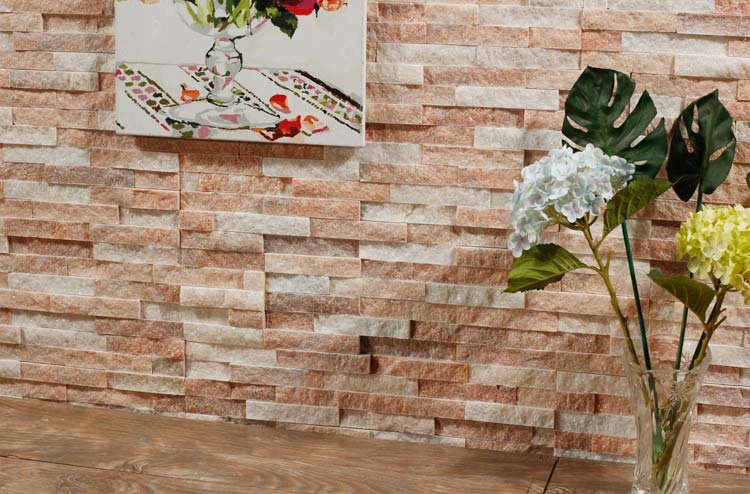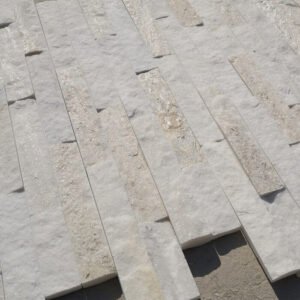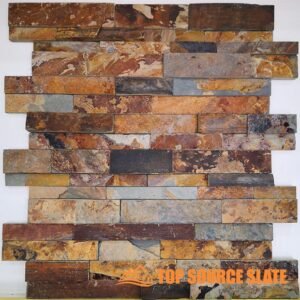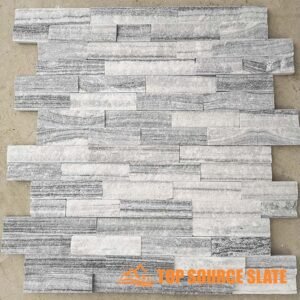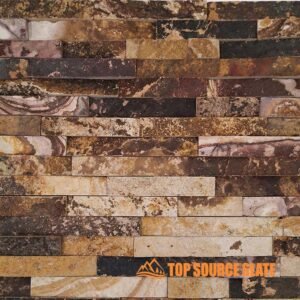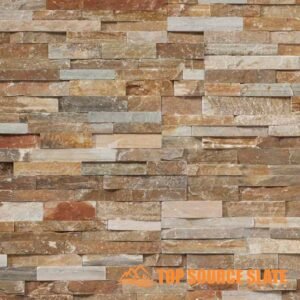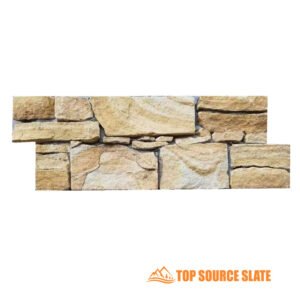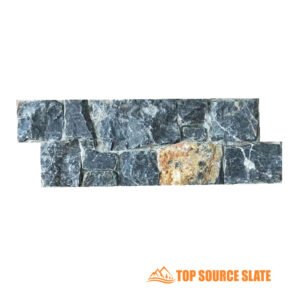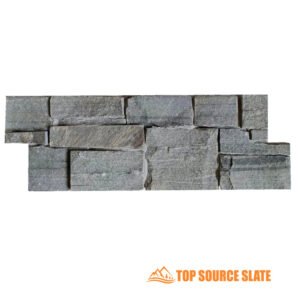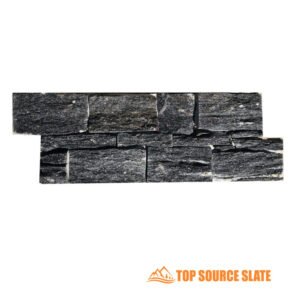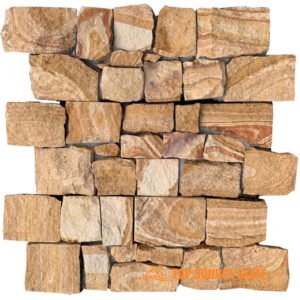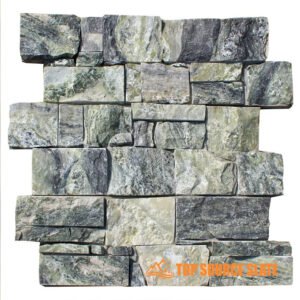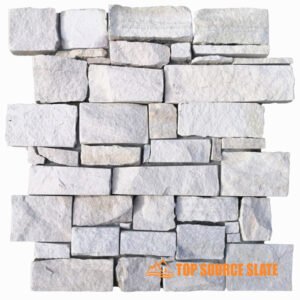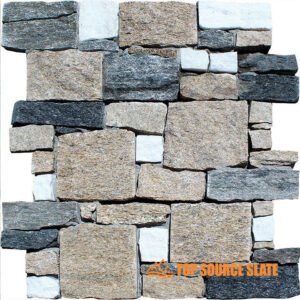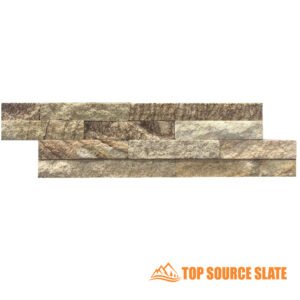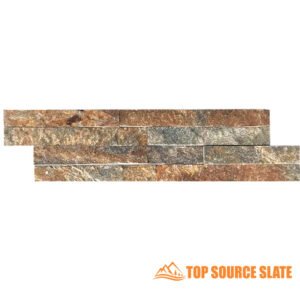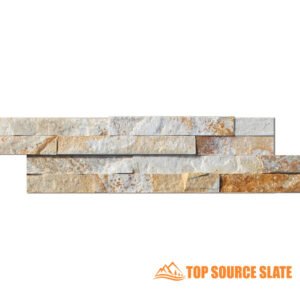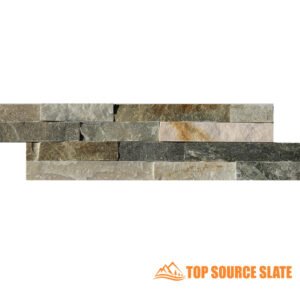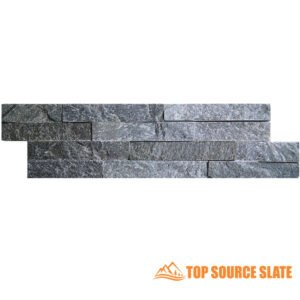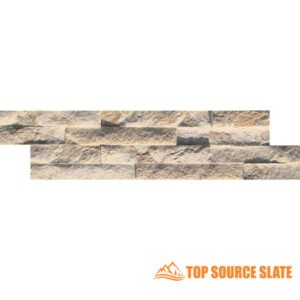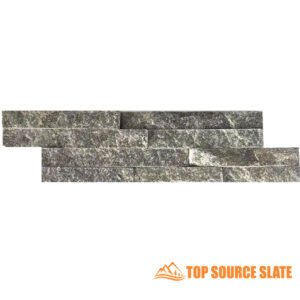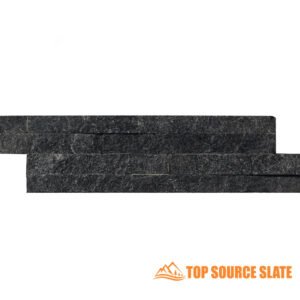外装積み重ねられた石 家の建築的魅力を強化するための見事な選択であり、素朴でありながらエレガントな外観を提供します。この汎用性の高い素材は、アクセントの壁から完全なファサードまで、さまざまなアプリケーションで広く使用されています。しかし、時間が経つにつれて、外部積み重ねられた石の自然の美しさは、環境要因のために衰退する可能性があり、住宅所有者はその美的および保護品質を維持するために塗り直しまたは染色を検討する必要があります。このガイドでは、外部積み重ねられた石を塗りつぶし、塗装、準備の手順、塗装、テクニック、メンテナンスのヒントを掘り下げる方法を探ります。
外装の積み重ねられた石を塗ることで、家の外観を変え、完全な改修を必要とせずに新鮮な視点を提供します。私たちが前進するとき、私たちはあなたがあなたの外部積み重ねられた石のベニヤパネルの寿命を確保しながら、あなたが知る必要があるすべてをカバーします。
1。積み重ねられた石を塗る理由
1.1美的魅力の強化
外部積み重ねられた石を描くための主な動機の1つは、その美的魅力を高めることです。石の自然な色は、現代のデザインの好みや周囲の風景と衝突することがあります。新しい色を選択することで、住宅所有者は外観に新しい命を吹き込むことができます。 カラーオプション ニュートラルなトーンから大胆で活気のある色合いまで、創造的な表現を可能にします。
たとえば、明るい色合いは明るく風通しの良い雰囲気を作り出すことができますが、暗い色はドラマと洗練を加えることができます。さらに、塗装は、トリム、ドア、窓など、家の全体的な配色との調整を可能にし、まとまりのあるデザインにつながります。
1.2外部積み重ねられた石を保護します
視覚強化に加えて、塗装は外部積み重ねられた石のパネルの保護層です。要素は天然石の表面に犠牲になり、侵食、変色、さらには構造的な損傷をもたらすことができます。高品質の塗料は、水分、紫外線、温度の変動に対する障壁を提供し、石の寿命を延ばします。
からの研究によると 国立保存技術とトレーニングセンター、塗装表面は、水分の吸収を最大75%減らすことができ、カビやカビのリスクを大幅に軽減できます。したがって、絵画は美しくするだけでなく、環境ストレッサーに対する石を要塞化します。
1.3外観の更新
塗装は、大規模な改修なしにあなたの家の外観を劇的に更新できます。最近、造園を変更したり、新しいアーキテクチャ機能を追加したりした場合、外部の積み重ねられた石を塗り直すと、全体的なデザインの中に調和が生じることがあります。さらに、住宅所有者はデザインのトレンドに追いつくことができ、長年にわたって家の外観を簡単にリフレッシュできます。
本質的に、外部の積み重ねられた石を描くことは、あなたの家の縁石の魅力を近代化し、強化するためのシンプルで効果的な方法であり、それがあなたの近所で傑出した機能であり続けることを保証します。
2。プロジェクトの準備
2.1外部積み重ねられた石の状態の評価
絵画プロセスに飛び込む前に、あなたの状態を評価する 外装積み石 不可欠です。ひび割れ、チップ、崩壊するモルタルなど、損傷の兆候をよく見てください。これらの問題に事前に対処することで、プロジェクトの外観が向上し、長期にわたる塗装ジョブが確保されます。
重大な損害が見つかった場合は、修理のために専門家に相談することを検討してください。このステップは非常に重要です。根本的な問題を解決することを無視すると、塗料の接着が不十分になり、将来さらに大きな損害が発生する可能性があります。
2.2外部積み重ねられた石のベニヤ表面のクリーニング
徹底的です クリーニング 石の表面は、準備のために交渉できないステップです。汚れ、汚れ、カビは塗料の接着を阻害し、不均一な仕上げにつながる可能性があります。ここにいくつかの効果的なクリーニング方法があります:
- 圧力洗浄: 圧力洗浄機を使用すると、頑固な汚れや破片を効率的に除去できます。外部の積み重ねられた石のベニヤパネルが損傷しないように、圧力が適切に設定されていることを確認してください。
- スクラブ: 小さな領域や繊細な石の場合、水と穏やかな洗剤の混合物を備えたスクラブブラシは驚くほど働くことができます。汚れが蓄積する傾向がある隙間に注意してください。
掃除後、湿った表面の上に塗装すると泡立ちや剥離を引き起こす可能性があるため、石を完全に乾燥させてください。
2.3損害の修復
評価中に亀裂やチップを特定した場合、塗装する前にそれらを修復することが重要です。修理の一般的な方法は次のとおりです。
- 迫撃砲の修理: モルタルジョイントの亀裂には、モルタルパッチング化合物を使用します。ジョイントをきれいにし、化合物を塗り、こてで滑らかにします。
- ストーンフィラー: 石の充填剤は、石のマイナーチップに塗布できます。アプリケーションと乾燥時間については、メーカーの指示に従ってください。
時間をかけて外部の積み重ねられた石タイルを適切に準備することで、見栄えが良く長持ちする成功した絵画プロジェクトの段階を設定します。
3.適切なペイントを選択します
3.1外部積み重ねられた石に適した塗料の種類
適切な塗料を選択することは、外部の積み重ねられた石で耐久性のある審美的に心地よい仕上げを実現するために重要です。通常、石の表面には2つの主要なタイプの塗料が推奨されます。
- アクリルペイント: 柔軟性と耐久性で知られるアクリルペイントは、外部用途に最適です。それは、外部積み重ねられた石のベニヤパネルによく準拠しており、衰退に抵抗し、優れたカバレッジを提供します。さらに、石が呼吸できるようになり、塗料の下に水分の蓄積のリスクが減ります。
- ラテックスペイント: もう1つの実行可能なオプションであるラテックスペイントは、水ベースで作業しやすいです。それはすぐに乾燥し、VOC排出量が少なく、オイルベースの塗料よりも掃除が簡単です。屋外で使用するために特別に処方された高品質のラテックス塗料を探してください。
塗料を選択するときは、屋外の要素に効果的に耐えることができるように、石積みまたは外部積み重ねられた石のラベルが付けられていることを確認してください。
3.2色の選択
外装の積み重ねられた石に適した色を選択すると、家の全体的な外観に大きな影響を与える可能性があります。ここにあなたの決定を導くためのいくつかのヒントがあります:
- 周囲を考えてみてください: あなたの家の羽目板、屋根、風景の色を考慮に入れてください。まとまりのあるカラーパレットは、外部デザインにハーモニーを作成します。
- サンプルのテスト: コミットする前に、常に石の表面にいくつかの色をサンプリングしてください。照明の状態と外部積み重ねられた石の壁の自然な色の影響を受けて、塗料が塗ると異なるように見えます。
- トレンドと時代を超越したもの: トレンディな色を選択するのは魅力的ですが、長期的に家に滞在する予定がある場合は、より時代を超越した色合いを選択することを検討してください。グレー、ベージュ、白のようなニュートラルトーンは、しばしば古典的な外観を提供します。
最終的に、適切な塗装色はあなたの家の縁石の魅力を高めるだけでなく、その価値と寿命にも貢献します。
4。必要なツールと材料
4.1重要なツール
適切なツールを手元に置くことは、絵画プロジェクトを成功させるために重要です。エクステリアスタックされた石をペイントするときに必要な必須ツールのリストは次のとおりです。
- ブラシ: さまざまなブラシ(合成および天然の毛の両方)が不可欠です。テクスチャサーフェスには、詳細な領域には、テクスチャの表面と細かいブラシに硬いブリストルブラシを使用してください。
- ローラー: 太い昼寝のあるローラーは、より大きな領域をすばやく覆うのに理想的です。詳細な作業には、より小さなローラーを使用できます。
- スプレー機器(オプション): 滑らかで均一な仕上げのために、特に大きな表面には塗料噴霧器の使用を検討してください。噴霧器を使用するときは、適切な保護具があることを確認してください。
- 布とテープを落とす: ドロップクロスを敷き、画家のテープを使用して、ペイントしたくない領域を隠して、隣接する表面を保護します。
4.2安全装置
絵画プロジェクトに着手する際には、安全性が常に優先される必要があります。推奨される安全装置は次のとおりです。
- 手袋: 使い捨てまたは再利用可能な手袋を使用して、塗料や化学物質から手を保護します。
- マスク: 特にスプレーペイントを使用している場合や、換気が不十分なエリアで作業する場合は、マスクが不可欠です。塗料の煙の評価付きマスクを選択してください。
- 安全ゴーグル: 特に圧力洗浄やツールを使用している場合は、スプラッシュや破片から目を守ります。
- 膝パッド: 地上レベルで長期間働く場合、膝パッドは不快感を軽減するのに役立ちます。
必要なすべてのツールと安全装置を確保することにより、よりスムーズでより安全な絵画体験のために自分自身を設定します。
5。絵画技術
絵を描くとき 外装積み石、使用する技術は、プロジェクトの全体的な仕上げと耐久性に劇的に影響を与える可能性があります。このセクションでは、長期にわたる効果を持つ専門的な結果を確保するための詳細なガイドを提供します。
5.1プライマーの適用
高品質のプライマーを使用することは、塗料が適切に接着し、外側の積み重ねられた石のクラッディングで持続することを保証するための不可欠な最初のステップです。プライミングは、均一なベースを作成し、多孔質表面を密封し、石があまりにも多くの塗料を吸収するのを防ぎ、不均一なカバレッジにつながる可能性があります。
- 適切なプライマーを選択してください: 外部積み重ねられた石の場合は、Anを選択します アクリル石積みプライマー。アクリルプライマーは非常に耐久性があり柔軟であるため、時間の経過とともにひび割れや剥離を防ぎながら、石のテクスチャーに適応できます。あなたの石が特に多孔質であるか、一度も塗装されたことがない場合は、特別な順守のために高結合プライマーを検討してください。
- プライマーを均等に適用します:
- ペイントブラシを使用して、エッジと詳細な領域にプライマーを適用することから始めます。粗い石の表面の場合、隙間に入るには硬い毛ブラシをお勧めします。
- 詳細な領域をカバーした後、より大きなセクションにローラーまたはスプレーを使用します。 a 厚い昼寝ローラー 積み重ねられた石のようなテクスチャー表面で最適に機能します。
- 不均一なプライミングは斑点のある塗料アプリケーションにつながる可能性があるため、すべての隅々をカバーしてください。通常、均一なコートで十分です。
- 十分な乾燥時間を許可します: 塗装に移る前に、プライマーを完全に乾燥させます。これは通常、気象条件に応じて約24時間かかります。このステップを急ぐことで、塗料が泡や皮をむきます。
- オプションのステップ – サンディング: より滑らかな仕上がりのために、表面を軽く磨きます ファイングリットサンドペーパー プライマーが乾燥した後。これにより、上昇したエリアでのプライマーの蓄積が削除され、塗料のより均一な表面が確保されます。
5.2塗装プロセス
プライマーが乾燥した後、実際の塗装プロセスに進む時が来ました。ブラシ、ローラー、スプレーで塗料を適用する方法は、外部積み重ねられた石のサイズとテクスチャーに依存します。詳細な内訳は次のとおりです。
塗料を徹底的にかき混ぜる:
- 始める前に、塗料が均等に混合されていることを確認してください。 塗料をかき混ぜます 色とテクスチャの一貫性を確保するために徹底的に。
エッジと詳細から始めます。
- ブラシを使用して、角、隙間、複雑なディテールに焦点を当てた外側の積み重ねられた石ベニアの端をペイントします。ブラシは、ローラーまたはスプレーヤーと比較して、これらの領域のより良い制御を提供します。
大きな表面のローラー:
- 広いエリアの場合、aを使用します 太いマップローラー 表面を効率的に覆う。昼寝(ローラーカバーの厚さ)は少なくとも ¾インチ それ以上、石のテクスチャの深さに応じて。これにより、塗料が外側の積み重ねられた石の隙間に浸透します。
- 長いストロークを使用して、ラップマークを避けるために、長いストロークを使用して、小さなセクションで転がります。 エッジの羽 以前に塗装された領域をわずかに転がして、シームレスなブレンドを作成します。
スプレーペインティング(オプション):
- 広い領域をカバーしている場合は、aを使用しています 塗料噴霧器 時間を節約し、均一なプロの仕上げを提供できます。噴霧器は、小さな亀裂や隙間に浸透する可能性があるため、高度にテクスチャーの外部積み重ねられた石のパネルに特に効果的です。
- ただし、散布にはより多くの準備が必要です。周辺地域をマスクする必要があるため 布と画家のテープを落とします オーバースプレーを防ぐため。
安全が重要です:
- 噴霧器を使用するときは、常にマスクとゴーグルを着用して、ペイントの煙やオーバースプレーから身を守ります。
複数の薄いコート:
- For the best results, apply multiple thin coats rather than one thick layer. This technique provides better coverage, minimizes drips, and ensures the paint adheres properly to exterior stacked stone surface. Allow each coat to dry thoroughly before applying the next.
- ヒント: When applying the second coat, use a criss-cross technique, painting in one direction for the first coat and the opposite direction for the second. This ensures even coverage and helps to avoid streaks or uneven texture.
Inspect and Touch Up:
- After the final coat is dry, inspect the painted surface for any missed spots, drips, or uneven areas. Use a small brush to touch up these areas for a flawless finish.
5.3 Techniques for a Professional Finish
プロフェッショナルなフィニッシュを達成するには、均一なカバレッジと洗練された結果を確保する高度なテクニックを使用することが含まれます。プロジェクトを次のレベルに引き上げることができるいくつかの方法を次に示します。
右昼寝ローラーを使用してください:
- 粗いまたは高度なテクスチャーの石の表面の場合は、aを選択します 厚い昼寝ローラー (1-1.25インチ)。より厚い昼寝により、ローラーは外側の積み重ねられた石の隙間に深く届きます。
- 表面がより滑らかな場合、より短いNAPローラー(½インチ)を使用して洗練された仕上げを実現できます。
エッジの羽毛:
- フェザーリングは、ペイントするときに各セクションのエッジをブレンドするテクニックです。これにより、1つの塗装された領域が別の領域と出会うという厳しいラインやラップマークがないことが保証されます。たとえば、1つのセクションで塗料を転がしている場合は、エッジを隣接する領域に軽く転がして、シームレスな遷移を作成します。
塗料を過労しないでください:
- 塗料を過度にブラシまたはオーバーロールすると、ストリーク、ブラシマーク、不均一なテクスチャーにつながる可能性があります。 塗料を滑らかで、均一なストロークで塗り、 塗料が乾燥し始めたら、同じエリアを複数回越えないでください。これは、外部の積み重ねられた石のようなテクスチャーの表面で特に重要です。そこでは、塗料を過剰に整理すると、隙間に不均一に蓄積する可能性があります。
コート間の乾燥時間:
- 少なくとも許可してください 4-6 hours of drying time between coats for water-based paints. For oil-based paints, it’s best to wait 24 hours. This prevents the undercoat from lifting and ensures each layer adheres properly.
- In cooler or more humid climates, drying times may be extended. Be patient, as proper drying ensures the longevity of the paint.
Backrolling (For Sprayers):
- If you’re using a sprayer, consider backrolling. This is a technique where, after spraying a section, you use a roller to go over the wet paint. This method helps push the paint into exterior stacked stone crevices and ensures even coverage.
Using a Sealer (Optional):
- For extra protection and longevity, consider applying a clear masonry sealer after the paint has dried. This not only enhances the color of the painted stone but also protects it from the elements, such as rain, sun exposure, and dirt accumulation.
- Choose a UV-resistant, breathable sealer designed for exterior masonry. Apply it with a brush or roller following the same techniques used for painting.
5.4 Special Considerations for Exterior Stacked Stone Veneer
Exterior stacked stone tile often comes with unique challenges because of its uneven surface and porous nature. Here are some additional considerations specific to this material:
- Porosity of the Stone: Highly porous stones, such as limestone or sandstone, may require additional coats of primer or paint to prevent the stone from absorbing too much of the product. Always test a small area first to gauge how the stone reacts.
- Natural Texture and Grooves: Because of its rugged texture, stacked stone tiles tend to have grooves and uneven areas that can be missed during painting. To combat this, make sure you change your viewing angle as you paint, ensuring no areas are left uncovered.
By following these comprehensive painting techniques, you’ll ensure your 外装積み石 looks professionally finished and is well-protected against the elements for years to come.
6. Maintenance After Painting
6.1 Inspecting the Paint
After painting your exterior stacked stone, regular maintenance is essential to preserve its appearance and durability. Start by inspecting the painted surface periodically, particularly after harsh weather conditions. Look for any signs of wear, such as:
- Peeling or Cracking: These issues can indicate poor adhesion or damage to the underlying stone.
- Discoloration: Fading paint can result from prolonged sun exposure.
- Mildew or Mold Growth: Check for any dark spots, especially in damp areas.
Addressing these issues promptly can prevent more significant damage and prolong the life of your paint job.
6.2 Touch-Up Tips
To keep your painted exterior stacked stone looking fresh, touch-ups may be necessary. Here’s how to manage minor repairs effectively:
- Identify Problem Areas: After inspection, mark any spots that need attention.
- Clean the Area: Before touching up, clean the affected areas with mild detergent and water to remove dirt or mildew.
- Use the Same Paint: For touch-ups, always use the same paint and color that you applied initially. If the paint has been exposed to sunlight for an extended period, consider bringing a sample to the store to match the color accurately.
- Application Method: Use a small brush for precision, blending the new paint into the existing surface for a seamless appearance.
Maintaining your exterior stacked stone panels not only keeps it looking great but also helps protect your investment over time.
7. Common Mistakes to Avoid
7.1 Skipping Preparation
One of the most significant mistakes homeowners make is skipping essential preparation steps. Proper preparation, including cleaning and repairing exterior stacked stone, is crucial for achieving a durable and attractive finish. Without it, paint can flake, peel, or chip, leading to costly repairs and the need for a complete repaint sooner than anticipated.
7.2 Using Incompatible Products
Another common error is using the wrong type of paint or primer. Not all paints are suitable for masonry or stone, and using incompatible products can result in poor adhesion and premature failure. Always select paints specifically designed for exterior stacked stone, and avoid oil-based paints unless they are explicitly recommended for stone surfaces.
7.3 Ignoring Weather Conditions
天気は、絵画プロジェクトの成功に重要な役割を果たします。極端な温度や湿度の塗装は、アプリケーションと乾燥プロセスに悪影響を与える可能性があります。理想的には、雨や直射日光などの状態を避けるために、塗装のために乾燥した穏やかな日を選択してください。
7.4プロセスを急ぐ
最後に、塗装プロセスを急いで行くと、間違いや下位仕上げにつながる可能性があります。準備からアプリケーションまで、各ステップで時間をかけてください。コート間の適切な乾燥時間を確保し、プライミングなどの必要な手順をスキップしないでください。急いでいる仕事は、しばしばやり直しの必要性をもたらします。これは、時間がかかり、イライラすることがあります。
これらの一般的な落とし穴を認識し、必要な予防策を講じることにより、外部の積み重ねられた石の美しさと寿命を高める成功した絵画プロジェクトを確保することができます。
キーテイクアウト
- 準備が重要です: 絵を描くことの前に石を掃除して修理することの重要性を過小評価しないでください。十分に準備された表面は、より良い接着と長持ちする仕上げを保証します。
- 適切な製品を選択してください: 外部の積み重ねられた石を保護および美化するために、高品質の石積み固有のプライマーと塗料を選択します。
- 定期的なメンテナンス: 塗装された表面を定期的に点検し、必要に応じてタッチアップを実行して、家を新鮮に見せてください。
- よくある間違いを避けてください: Be mindful of preparation, product compatibility, weather conditions, and take your time throughout the process to avoid pitfalls.
With these guidelines in hand, you can confidently undertake your exterior stacked stone painting project. Not only will you enhance the aesthetic appeal of your home, but you will also protect your investment for years to come. Whether you’re looking for a fresh look or a protective layer, painting your exterior stacked stone is a worthwhile endeavor.
8. Conclusion
Painting 外装積み石 あなたの家の美しさと寿命を強化するやりがいのあるプロジェクトになることができます。ペイントする理由を理解し、表面を徹底的に準備し、適切な材料を選択し、塗装を慎重に塗布することで、家の縁石の魅力を高める驚くべき結果を達成できます。
トップソーススレート これらすべての領域で優れているため、家の外で覆われているか屋内の特徴的な壁に取り組んでいるかどうかにかかわらず、私たちはあなたの石のクラッディングの願いの中で最高の共犯者になります。今日お問い合わせください 次の課題をどのように支援するかについて詳しく知るため。

